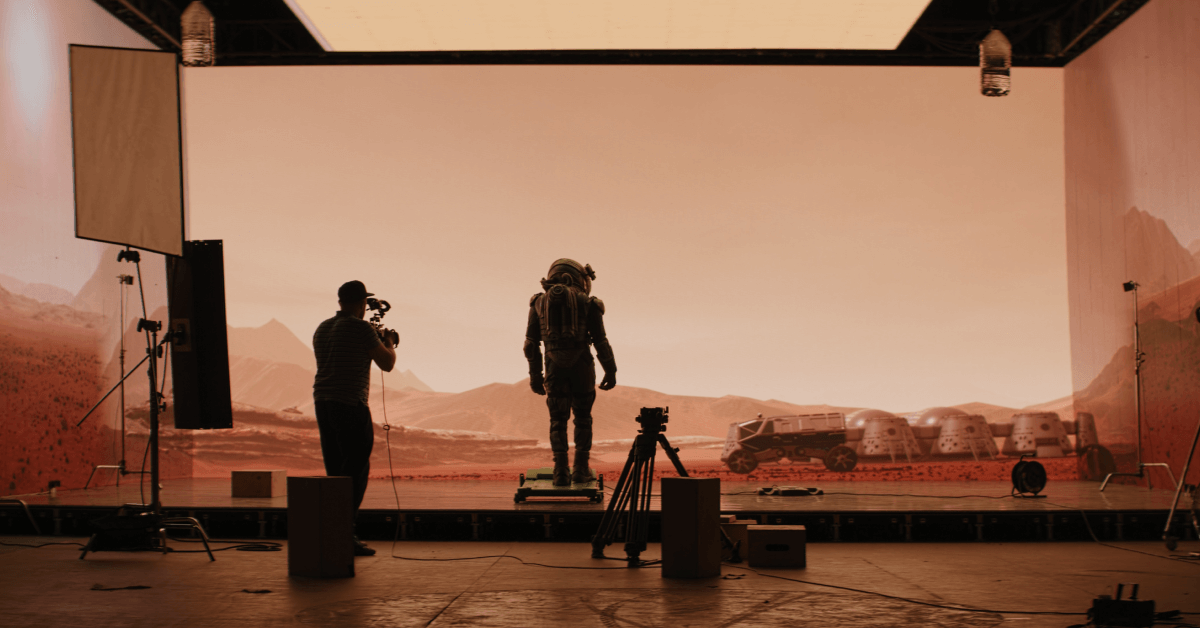Learn how you can use the power of sound to build connection for your brand, client, or creative project.
Imagine sitting in a cozy café, the murmur of conversations blending with the clinking of cups, the gentle hum of an espresso machine, and the soft background music setting a relaxing ambiance. Suddenly, a favorite song from your high school years comes on. Instantly, you're transported back in time, feeling the same rush of emotions as if it were yesterday. Isn't it remarkable how sound can do that?
In this article, we'll explore the incredible power of sound in shaping our experiences and connections. From the emotional impact of music to the subtle cues of voice tone and the strategic use of sound design, learn how these elements can enhance communication, influence emotions, and build community. Unlock the potential of sound to turn everyday interactions into meaningful moments and lasting memories.
The Power of Sound
When we think about sound, it's usually in the context of things that produce it, rather than its profound significance and its influence on our experiences. Sound uniquely connects us in ways no other medium can. Harnessing the power of sound has enabled us to create music, language, and stories. It gives us the ability to elicit emotions and implant lasting memories in our minds.
Sound creates culture, makes brands go viral, transforms venues into community hubs or desolate spaces, and resonates through time and space.
Exploring the Science of Sound
Pause for a moment and think of your mother's voice. How does it make you feel? Recall your favorite song, the buzz of a city you love, the crash of ocean waves, the chatter at a bustling farmers market, or the serene silence of a place of worship.
Each sound evokes a distinct emotion. Sound has an immediate impact on both our mental and physical well-being. It affects our heart rate, prepares us for fight or flight, or ushers us into a deep, calming meditative state. Research shows that sound can relax muscles, boost hormone production, and increase blood flow. Sound is a powerful tool—so use it wisely!
Why Communication Matters
Everyone has a story and a message they wish to share. The manner in which we communicate can significantly influence whether we capture attention or are disregarded.
The quality and tone of your voice are paramount in engaging others. Consider the difference in perception when someone speaks quickly in a high pitch, their voice rising with each sentence, versus someone who speaks slowly in a deep tone, ending each statement decisively. The latter voice conveys confidence and control, compelling listeners to engage more deeply.
Reflect on your own voice and consider how it might be perceived. A well-modulated voice can open up channels of communication and deepen connections with your audience.
Music is a Universal Language
Music is fundamental to human expression. It not only evokes specific emotions, but also transports us to different times and places. A single piece of music can bring back memories from years past, and a familiar tune from decades ago can suddenly have you singing every word. Music also unites people, with every culture cherishing its own iconic melodies.
How can we use this knowledge to direct the minds of the listener to an emotion, a way of thinking, a style, or an era? My favorite way to test this is to play music in a room full of people and see how it changes the group behavior. Learn what resonates with your audience; understanding their musical preferences can significantly enhance the way they experience and interact with your content.
The Art of Sound Design
Effective sound design can make any story more engaging and believable. Whether it's for animation, drama, comedy, or fantasy, thoughtful and consistent sound choices are crucial. Sometimes, a quiet, subtle sound can be more powerful than a loud one, drawing your audience in closer. At its core, sound design tells your audience where their attention should go without ever drawing attention to itself.
Sound design not only supports storytelling but also shapes the audience's emotional journey, allowing them to immerse fully in the narrative. While voice connects you to story and character, and music makes you feel, sound design engages, captivates and makes your audience get lost in the story. It creates and releases tension throughout the listeners journey so your audience has the absolute freedom to laugh, cry and forget the struggles of their life. This doesn’t need to take place over a two hour film either, this can happen in an instant, if you only choose the right sounds to help get them there.
Harnessing Sonic Memories
Think back to the cartoons and commercials of your childhood. The jingles and sounds from these ads are likely still with you, illustrating how sound can create lasting memories.
It’s our job, as creatives, to build these memories now so in the future there will be moments when your audience will gently and joyfully slide into the nostalgia of yesterday. Your message can still have a voice decades after it was received.
Sound in the Digital Age
In the era of platforms like Instagram and TikTok, capturing and holding attention is more challenging than ever. Using sound creatively can make your content stand out. Short, memorable pieces of music or sound can interrupt the scrolling pattern and engage viewers longer than the average video.
Use signature sounds, meme music, and rapid calls to action to engage your audience. You’ve got 5 seconds to make an impression, use every one of them!
Podcasts and Audiobooks
The intimate nature of podcasts creates a direct connection with listeners, often over extended periods. Podcasts and audiobooks trump all other forms of content in the length of engagement from your listener. The quality of sound can make or break this connection. Have an intense focus on recording your audio well. When your listener hears a thin, distorted or overly reverbed voice, they will quickly bounce from your podcast to one that is more sonically pleasing.
Similarly, in audiobooks, the shift towards AI-narrated content has stirred mixed feelings about the loss of human nuance in storytelling. While the quality of the listening experience is often enhanced by the use of AI-narrated content, it lacks character and emotion. If your budget permits, hire a flesh and blood narrator, or better yet, the author to read the audiobook. Your listeners will thank you.
Embracing Immersive Audio
Immersive audio technologies like Dolby Atmos and Apple Spatial Audio are revolutionizing how we perceive sound, offering a 3D experience that enhances storytelling. By enveloping listeners in sound from all directions, these technologies create a more engaging and memorable narrative experience. They provide creators with new tools for experimentation and innovation, shaping the future of entertainment. Embracing these technologies enables storytellers to craft richer, more immersive experiences that resonate with audiences on a deeper level.
This heightened level of immersion can captivate your audience and transport them into the heart of your narrative. This is engaging audio in its truest form!
Conclusion
Sound is a powerful storyteller. By understanding and utilizing the different aspects of sound, from the tone of a voice to the complexity of sound design, you can create richer, more engaging experiences that resonate with your audience and leave lasting impressions. So go do it! Make something amazing.
Working with a team? Take the next step to empower your creative team to deliver the best sound possible with our free guide.

Andrew Kantos is a sound designer with 20 years of experience, now leading HiMidLow, a sonic branding agency.
















